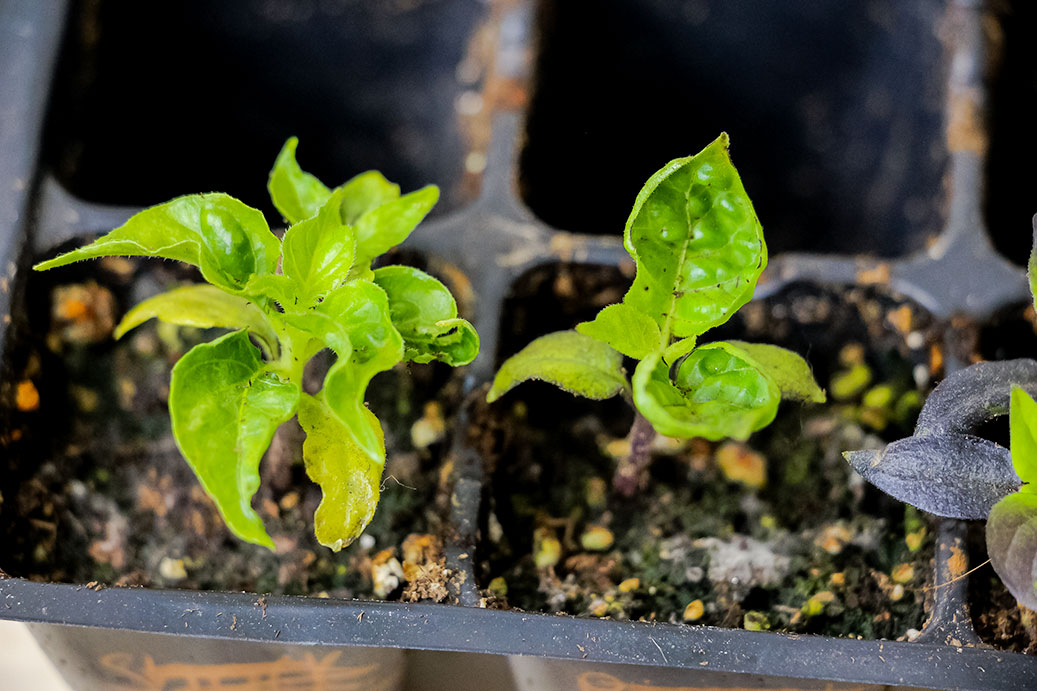To fix overwatered pepper plants, carefully assess soil moisture levels and adjust watering frequency accordingly. Overwatering can lead to root rot and other issues, so allowing the soil to dry out before watering again can help restore plant health.
Pepper plants are a popular choice for home gardeners, as they provide a delicious bounty and add a vibrant touch to any garden or patio. However, like any other plant, they can suffer from overwatering, which can lead to root rot and stunted growth.
If you’ve noticed your pepper plants looking droopy or showing signs of yellowing leaves, it’s important to take immediate action to fix the issue. We will explore the most effective ways to address overwatering in pepper plants, ensuring their health and productivity throughout the growing season.

Credit: pepperscale.com
How to Fix Overwatered Pepper Plants: Step by Step Guide
Diagnosing Overwatered Pepper Plants
Overwatered pepper plants can be a common problem for gardeners. Diagnosing the issue requires an understanding of the signs of overwatering. One sign to look out for is wilting leaves that are still green. These plants may also have yellowing leaves, which indicate that the roots are being suffocated.
Additionally, overwatered pepper plants may exhibit slow or stunted growth, as excess moisture can hinder nutrient absorption. The soil may feel excessively damp or even waterlogged when touched. To fix overwatered pepper plants, it is important to adjust the watering schedule.
Allow the soil to dry out between waterings and provide adequate drainage for the plants. This will help prevent further damage and promote healthy growth for your pepper plants.
Adjusting Your Watering Technique
Adjusting your watering technique is essential when it comes to fixing overwatered pepper plants. Evaluating drainage is the first step. Ensure that water is not pooling around the roots by modifying your watering schedule. Consider using self-watering systems to maintain a balanced moisture level.
These systems allow plants to draw water as needed and prevent overwatering. By following these steps, you can effectively address the issue of overwatered pepper plants and help them thrive.
Restoring Health To Overwatered Pepper Plants
Restoring health to overwatered pepper plants involves several key strategies. First, the soil drying methods should be implemented to remove excess moisture. Promoting root recovery is crucial for the plants’ revival, allowing them to absorb nutrients more efficiently. Foliar treatments can be used to provide essential nutrients directly to the leaves, aiding in the healing process.
Aeration techniques, such as using a fan or increasing airflow, help to prevent further waterlogging. Organic fertilizers can then be applied to replenish nutrients in the soil and support overall plant growth. Finally, pruning affected foliage removes damaged or diseased parts, promoting healthier growth.
By following these strategies, overwatered pepper plants can regain their vitality and thrive once again.
Frequently Asked Questions For How To Fix Overwatered Pepper Plants
What Does An Overwatered Pepper Look Like?
An overwatered pepper plant exhibits signs of yellowing leaves, wilting, and root rot due to excess water retention.
How Do I Bring My Pepper Plant Back To Life?
To bring your pepper plant back to life, follow these steps: 1. Check soil moisture and water accordingly, avoiding over or under watering. 2. Provide ample sunlight, at least 6-8 hours per day, or use grow lights indoors. 3. Remove any dead or damaged leaves or stems to encourage new growth.
4. Apply a balanced fertilizer to provide essential nutrients for plant revival.
How Do You Treat Struggling Pepper Plants?
To treat struggling pepper plants, ensure they receive adequate sunlight, water, and fertilizer. Prune damaged leaves and provide support if needed.
Can Pepper Plants Wilt From Too Much Water?
Yes, pepper plants can wilt if they receive too much water.
Conclusion
Overwatering can be a common mistake when caring for pepper plants, but with the right steps, you can fix the issue and get your plants back on track. First, identify the signs of overwatering, such as yellowing leaves and wilting.
Once identified, it’s crucial to adjust your watering habits and provide proper drainage to prevent waterlogged roots. Trim off any damaged or diseased foliage and avoid fertilizing until the plants have recovered. A good watering schedule is essential, allowing the soil to dry out between waterings.
Consider using a moisture meter to help monitor the moisture levels in the soil. By following these steps and paying close attention to your plants’ needs, you can successfully restore your overwatered pepper plants to health and ensure a bountiful harvest.
Remember, proper plant care and attention to detail are key factors in maintaining healthy and thriving plants.

